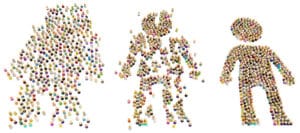
Using Behavioral Science to Minimize Quiet Quitting
Did you know they were unhappy? Could you tell they were slowly disengaging? Was the quality of their work declining? Were they a high performer up to then? As managers, we are exactly the people who can have the greatest success at preventing employees from ‘quiet quitting’. But we can’t act blindly. We need to understand more about what really motivates each of our employees as individuals, how to communicate with them most effectively, or how they might respond to stress. If we were armed with this kind of information, we could have been in much better position to smooth out any professional rough patches with each employee before they became an issue.
Combining that knowledge, which can be provided though tools that leverage behavioral science, along with regular informal check-ins with each employee, puts you as a manager in a much better position to prevent ‘quiet quitting’ or worse, have it turn into regrettable attrition.
Personality traits are considered to be generally hard-wired in a person. Those hard-wired traits, along with situations and circumstances will determine a person’s behaviors – including our work behaviors.
Quiet Quitting? Or Regrouping?

Let’s face it – it’s been a lot for anyone and it’s no wonder employees need to take a breather and take some control back.
To be clear: employees shouldn’t be punished for ‘just wanting to do their job’. It’s more about recognizing early warning signs and gradual changes in an employee’s typical behavior that are an indication of active disengagement, a pre-cursor to quiet quitting.
Perhaps they were team players and have now stepped away from team activities; they had been easy-going but now they get agitated easily; they were even-keeled, but now they are tend to get more easily riled up and emotional. It’s the subtle and gradual changes over time that led to this change in their ‘typical behavior’. By providing every employee with better self-awareness about what “makes them tick” and by providing managers with guidance about how to best deal with the uniqueness of each employee – given their emotional DNA – we can prevent many of the instances of disengagement and the negative consequences that come with it.
Behavioral Assessments are the First Step

The first step is administering a behavioral assessment. Typically, this happens at the time a candidate is being considered for a job to establish cultural fit with the organization, but also to assess fit with an existing team. However, the behavioral data derived from that assessment provides a wealth of value for both managers and employees well beyond the selection process.
For the manager: Pairing regular check-ins with behavioral insights to help build relationships and adapt their management approach based on the unique characteristics of each person. These insights provide managers an early warning sign that things may not be going well for the employee and suggest ways to reengage them.
For the employee: Understanding their own traits and behaviors and how they may impact their work and those around them. Providing them the self-awareness that allows them to bring their ‘best self’ to work every day – preventing them from slowly disengaging.

Let’s face it: it’s never good to lose a good employee. But there are tools in our toolbox that allow us to put our best foot forward and do what we can for ourselves and our employees. Behavioral science can be your secret weapon to ensure everyone stays engaged, productive, and happy in their jobs.
